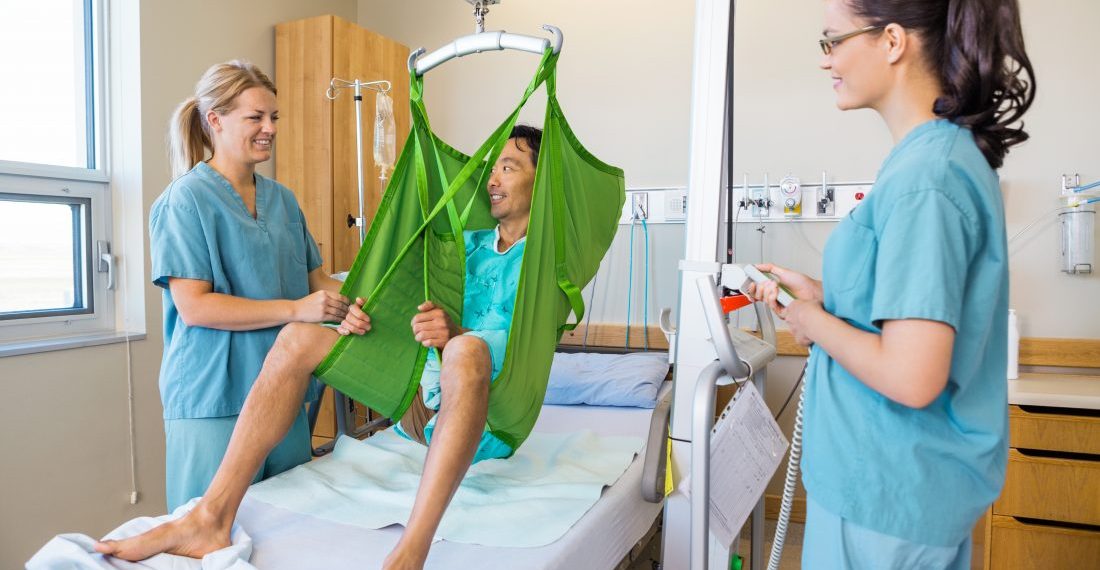Amidst the urgency and time constraints of a modern workplace, it’s easy to underestimate the importance of proper manual handling. This seemingly routine activity encompasses a range of necessary tasks involving lifting, lowering, pushing, pulling, carrying or otherwise moving, holding, or restraining any person, animal, or thing. And, yes, you guessed it, we all do it, even keyboard warriors.
Neglecting safe manual handling practices can lead to serious musculoskeletal injuries (MSD), which account for a significant portion of workplace accidents. In this article, we’ll explore the pivotal role of manual handling training in preventing MSD injuries, and how a comprehensive understanding of first aid is instrumental in immediate response and long-term recovery.
The Prevalence of Musculoskeletal Injuries
Musculoskeletal injuries are distressingly common in workplaces around the world. They can stem from a variety of causes, ranging from overexertion due to heavy lifting, to awkward postures and repetitive movements.
According to Catholic Education Australia, injuries due to manual handling account for in the order of 50 percent of injuries in schools and other workplaces.
The toll on an individual’s well-being and the efficiency of a workforce cannot be underestimated. Therefore, implementing proper manual handling techniques is paramount in reducing the risk of such injuries.
Manual Handling Training: Building a Foundation of Safety
Manual handling training serves as the cornerstone of a safe and productive work environment. It equips employees with the knowledge and skills needed to navigate potentially hazardous situations. Increasingly, employers around the world are required by law to provide a safe working environment. This involves the assessment, prevention, and mitigation of risks and hazards and the proper training of workers.
Essential Manual Handling Training for Workers: What You Need to Know
In the Australian setting, safety law requires that someone operating a business or undertaking must provide “any information, training, instruction or supervision that is necessary to protect all persons from risks to their health and safety” (WHS Act 2011, section 19 f).
The Hazardous Manual Tasks Code of Practice (page 32) further clarifies this “If a risk of MSDs [Musculoskeletal Disorders] remains after implementing higher-level control measures, then the risk must be minimised by providing information, training, and instruction.”
What Does Effective Training Look Like?
Accredited training organizations such as Skills Training College, provide quality manual handling training that not only focuses on proper lifting techniques but also emphasizes the importance of awareness, posture, and leveraging mechanical aids when available.
Through comprehensive training, individuals gain a deeper understanding of their own physical limitations and learn how to work within them. This knowledge empowers them to make informed decisions about how to approach various manual handling tasks. By investing in this training, employers not only protect their staff but also safeguard the efficiency and productivity of their operations.
Practical Tips for Safe Manual Handling
To mitigate risks associated with manual handling tasks, tailor precautionary measures to the specific activity. When faced with potentially hazardous operations that cannot be avoided, prioritize the availability of mechanical aids such as a trolley, forklift, or hoist. In instances where this isn’t feasible, explore potential adjustments to the task, load, and work environment.
If manual lifting remains the sole recourse, consider the following steps to minimize risks:
- Opt for smaller, lighter loads that are easier to handle.
- Break down sizable consignments into more manageable portions.
- Adapt the workspace to reduce distances for carrying, limit twisting motions, and minimize the need to lift objects from low or high positions.
- Adjust work schedules to prevent overexertion due to excessive workloads and tight deadlines.
- Enhance the work environment by providing ample space, ensuring suitable flooring, adding extra lighting, or regulating air temperature – all of which contribute to safer and more manageable manual handling.
- Ensure that individuals tasked with lifting have undergone comprehensive training to do so as safely as possible.
The Vital Role of First Aid in MSD Incidents
Despite our best efforts, accidents can still occur. In the event of an MSD injury, immediate response is crucial. This is where a solid foundation in first aid becomes invaluable. A trained individual can provide initial assistance that not only alleviates pain but also prevents further damage.
Immediate Response: The First Line of Defense
In the aftermath of an MSD incident, every second counts. Properly trained personnel can assess the situation swiftly and take appropriate action. From immobilizing a limb to applying cold compresses, their knowledge ensures that the injured party receives the best possible care in those critical moments.
Moreover, early intervention can significantly reduce the severity of an injury. By stabilizing the affected area and providing immediate relief, first aid can pave the way for a smoother recovery process. This timely response can make a world of difference in the long-term outcome for the injured individual.
The Importance of Cardiopulmonary Resuscitation
Cardiac arrest due to a manual handling accident requires a quick response in order to save lives. Administering CPR in a timely manner significantly increases the likelihood of survival, potentially doubling or even tripling the chances following a cardiac arrest.
Basic CPR: What To Do
Initiate effective CPR by applying firm pressure, compressing the chest by at least two inches at a pace of 100 to 120 compressions per minute, and allowing the chest to fully recoil after each compression.
Complementing Manual Handling Training with First Aid Knowledge
While manual handling training focuses on prevention, first aid is the bridge to recovery. These two elements work in tandem to create a holistic approach to workplace safety. By intertwining these practices, we create a safety net that not only minimizes the risk of injury but also ensures that, if an accident does occur, the response is swift and effective.
Organizations that invest in the essential skills provided by first aid training, demonstrate their commitment to the well-being of their workforce, fostering a culture of safety and productivity.
A Unified Approach to Workplace Safety
The significance of manual handling training cannot be overstated. It is the first line of defense against musculoskeletal injuries, and when combined with first aid knowledge, creates a formidable shield against workplace accidents leading to permanent disability.
Accredited training organiations provide comprehensive manual handling, first aid, and CPR training, with both online and offline training options.
The benefits for workplace teams certified with these skills are a game changer for their health, productivity, and long-term well-being.







